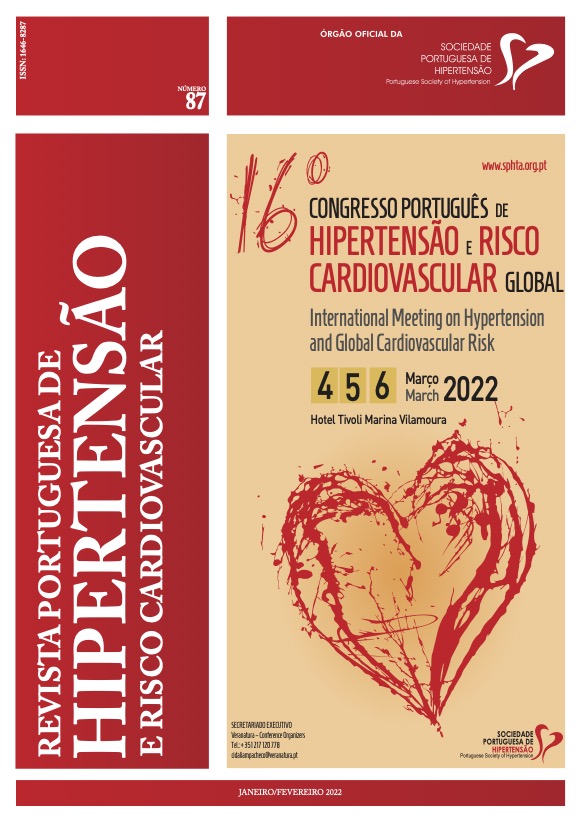ARE PATIENTS WITH ATRIAL FIBRILLATION MEDICATED WITH WARFARIN EFFECTIVELY HYPOCOAGULATED? OBSERVATIONAL STUDY IN TWO FAMILY HEALTH UNITS IN THE LISBON REGION.
DOI:
https://doi.org/10.58043/rphrc.2Keywords:
atrial fibrillation, warfarin, TTRAbstract
Atrial fibrillation (AF) is one of the main causes of stroke and one way to reduce the associated risk is through effective anticoagulant therapy, which means maximizing the number of INRs in therapeutic range (TTR) when using warfarin in patients.
This retrospective observational and analytical study aims to assess TTR indicators in patients receiving warfarin for atrial fibrillation under the medical care of two family health units in Lisbon, Portugal, as well as to compare the existence of suboptimal modifiable haemorrhagic risk factors and the number of haemorrhagic and cardiovascular events among patients with good or bad therapeutic control.
In a total of 50 eligible patients, 57,8% had INR values within the therapeutic range and the average TTR value was 57,89%. When it comes to modifiable haemorrhagic risk factors, 22% of the patients had uncontrolled hypertension and 26% had been prescribed with nonsteroidal anti-inflammatory or anti-platelet drugs. In the group with bad therapeutic control, 58% of the patients had haemorrhagic and cardiovascular events (p = 0,288) and 58% had suboptimal modifiable haemorrhagic risk factors (p = 0,845).
This study confirmed a good therapeutic control regarding warfarin use when comparing to other national and international studies in general. However, it showed lower values when comparing the results to other national primary care studies. There was a higher number of haemorrhagic and cardiovascular events and suboptimal modifiable haemorrhagic risk factors in the group with bad therapeutic control, although those numbers were not statistically significant.
This study shows there is still a long way to go when it comes to improving the treatment of AF in patients medicated with warfarin in primary care units. Hence, a broader approach of these patient is needed, in order to reduce their morbimortality.
Downloads
References
Vestergaard A, Skjoth F et al. The importance of mean time in therapeutic range for complication rates in warfarin therapy of patients with atrial fibrillation: A systematic review and meta-regression analysis. PLoS ONE. 2017 Nov 20;12(11):e0188482.
P. Kirchhof et al, 2016 ESC Guidelines for the management of atrial fibrillation developed in collaboration with EACTS European Heart Journal. 2016 Oct 7;37(38):2893-2962.
Gateman D, Trojnar M et al. Time in therapeutic range: Warfarin anticoagulation for atrial fibrillation in a community- based practice. Can Fam Physician. 2017;63(10):425-431.
Szummer K, Gasparini A et al. Time in therapeutic range and outcomes after warfarin initiation in newly diagnosed atrial fibrillation patients with renal dysfunction. Journal of the American Heart Association. 2017 Mar 1;6(3):e004925.
Bungard TJ, Yakiwchul E et al. Drug interactions involving warfarin: Practice tool anpractical management tips. CPJ/ RCP. 2011 Jan; 144(1):21-25e9.
Monteiro, Pedro. Estudo Safira: reflexões sobre a prevalência e os padrões de tratamento de fibrilhação auricular e risco cardiovascular em 7500 indivíduos com 65 anos ou mais. Rev Port Cardiol. 2018;37(4):307-313.
Guedes, M, Rego C. Estudo HIPOGAIA: monitorização da hipocoagulação oralcom dicumarínicos no concelho de Gaia. Revista Portuguesa de Cardiologia. 2015;35(9):459- 465.
Agnelo P, Alexandra D; Matias S. Monitorização de doentes sob hipocoagulação oral numa unidade de cuidados de saúde primários. Revista Portuguesa de Cardiologia. 2013; 33(7); 397-401.
Pinho-Costa L, Moreitra S, Azevendo C, et al. APOLO I: controlo da hipocoagulação na fibrilhação auricular. Revista portuguesa de cardiologia. 2014; 34(5): 337-345.
Gomes, E., Campos, R., Morais, R., Fernades, M. Estudo FATA: Prevalência de Fibrilhação Auricular e Terapêutica Antitrombótica nos Cuidados de Saúde Primários de um Concelho do Norte de Portugal. Acta Medica Portuguesa, 2015;28(1):35-43.
Urbonas, G.; Valius, L.; Sakalyte, G; PEtniunas, K.; Petniuniene, I. The quality of anticoagulation therapy among warfarin-treated patients with atrial fibrillation in a primary health care setting. Medicina, 2019, 55(1):15.
RydbergD,etal.Riskfactorsforseverebleedingeventsduring warfarin treatment: the influence of sex, age, comorbidity and co-medication. Eur J Clin Pharmacol. 2020;76(6): 867–876.
Downloads
Published
How to Cite
Issue
Section
License
Copyright (c) 2022 Revista Portuguesa de Hipertensão e Risco Cardiovascular

This work is licensed under a Creative Commons Attribution 4.0 International License.




